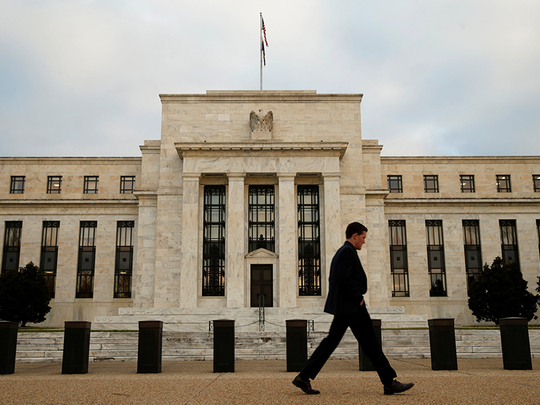
New York: It took only a few days for interest-rate anxiety to flood back into the bond market.
After dismissing the chance of a Federal Reserve rate increase in June, traders reversed course on Wednesday when minutes from the most recent Federal Open Market Committee meeting sent yields soaring. Most officials said at the April gathering that a move in June would be warranted if economic data indicate stronger growth and inflation.
Two-year yields jumped to the highest since March following the release as traders boosted the probability of a June increase to 32 per cent, from just 4 per cent at the start of the week. Treasuries slid again Thursday.
“What’s unsettled markets is the fact they had completely priced out June,” said Gregory Peters, a senior investment officer at Prudential Financial Inc.’s fixed-income unit, which oversees about $621 billion in Newark, New Jersey. “So that’s kind of a shock to the system.”
US 10-year note yields climbed three basis points to 1.88 per cent as of 6.55am in London, according to Bloomberg Bond Trader data. The price of the 1.625 per cent security maturing in May 2026 fell 1/4, or $2.50 per $1,000 face amount, to 97 22/32. The yield jumped eight basis points Wednesday, the biggest increase since March 1.
Traders jolted
The minutes jolted traders who had nearly ruled out a June increase after a weaker-than-forecast report on April jobs growth released May 6. Following those statistics, traders’ expectations for Treasury-market volatility slid to the lowest since December 2014, according to the Merrill Option Volatility Estimate index.
“You can see that this is a pain move” in the markets, said Chris Rupkey, chief financial economist at Bank of Tokyo-Mitsubishi UFJ Ltd. in New York. “Somebody’s really in pain, they’re losing money.”
The declines in Treasuries came even after two Fed officials primed the market for a hawkish view. Regional Fed presidents Dennis Lockhart and John Williams said Tuesday that at least two rate increases would be warranted this year because the economy is expanding and inflation is quickening.
‘Back burner’
“Before the last week or so, people had put any possibility of a hike this summer on the back burner,” said Jonathan Rick, a New York-based interest-rate derivatives strategist at Credit Agricole CIB. “Then in the last couple of days, because of Fed rhetoric and economic data, investors started to get concerned that there would be an argument for a hike sooner than later. Then the minutes supported that rhetoric, and in part confirmed people’s changing expectations.”
Hideo Shimomura at Mitsubishi UFJ Kokusai Asset Management said he’s sticking to his forecast for the central bank to stay on hold in 2016.
“Even if the Fed hikes, it won’t affect long-term yields much,” said Shimomura, who is chief fund investor in Tokyo at the company which manages $109 billion. “I’d say that job creation won’t continue at the present pace. Long-term yields might head south.” Ten-year yields will fall to a record 1.25 per cent by Dec. 31, he said.
Moody’s Investors Service said it expects the Fed to raise its benchmark “at most” two times this year. The company lowered its 2016 growth forecast for the US economy to 2 per cent from 2.3 per cent to account for a weak first quarter, it said in an emailed statement.
The Fed is steering the market into line with its views, said John Gorman, head of US debt trading for Asia and the Pacific in Tokyo at Nomura Holdings Inc.
“They did a very good job,” he said. “I’m still not sure they go in June. In my mind, I’m absolutely positive they go in September.” Nomura is one of the 23 primary dealers that trade directly with the US central bank.












